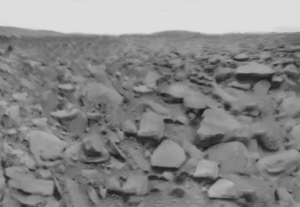You may have seen the news in the last few weeks about detection of the chemical phosphine in the atmosphere of Venus. Phosphine is a rare chemical that should not be able to survive in Venus’s atmosphere, and its presence is an indicator of either weird chemical processes beyond our current understanding, or life. This is an incredible discovery and raises dozens of questions about the atmosphere of our nearest neighbor. It may even inspire new missions to Venus to study the atmosphere from within, but they will not be the first missions to do so. The history of Venusian probes stretches back more than fifty years, and includes such honors as “first probe launched from Earth to another planet”, “first successful interplanetary mission”, “first man-made object to land on another planet”.
Observations of Venus have been occurring for at least as long as written language, and it is no surprise, given that Venus is the brightest object in the night sky, other than the moon. In fact, the oldest recorded astronomical observations are of Venus.

Thousands of years later, in the 17th century astronomers Galileo Galilei and Jeremiah Horrocks made the first observations of the phases and transit of Venus, respectively. A 1761 observation of Venus’s transit across the sun, by Mikhail Lomonosov, first proved that Venus had an atmosphere.
Almost exactly 200 years later, on February 12, 1961 the Russian Venera 1 spacecraft was launched, with the goal of studying Venus with an array of on-board measurement tools. Venera 1 was the first spacecraft to fly by Venus, as well as being the first interplanetary probe launched from Earth. Unfortunately, it lost communication with Earth shortly after launch, and no science results were ever received. The first mission to send back data about Venus was NASA’s Mariner 2 probe, which completed a flyby of the planet in 1962.
Venera 3 was the first manmade object to land on another planet, although, admittedly, it was a crash landing. Venera 4 returned the first data on the composition, pressure, and temperature of Venus’s atmosphere. The probe took measurements down to 25km above the surface of Venus, at which point the incredible pressure (~320 psi) and heat (530℉) of the atmosphere overcame it. Venera 7, launched in 1972, was the first to successfully execute a planned landing on the surface, and transmitted back a weak signal, the first received from the surface of another planet.

The twin Venera 9 and 10 missions were the first to take and return images of the surface. They broadcast images of the rocky, volcanic surface, and provided valuable atmospheric data on the composition and height of Venusian clouds. Venera 13 and 14, launched in 1981, transmitted back the first color images, as well as data on seismology, wind, and rock composition. They marked the last time a probe transmitted data from the surface of Venus.
Since then, several missions have been learning about Venus from orbit around it, including the Magellan satellite from NASA, the first to image the full surface of the planet, and the Japanese Akatsuki mission, which is currently orbiting Venus and gathering information about the atmosphere and weather.
While we don’t know yet exactly what phosphine on Venus means, hopefully this exciting discovery will spark an exciting new era of exploring Venus.
Peer edited by Kayla Goforth